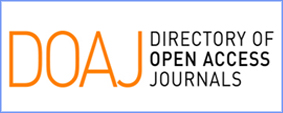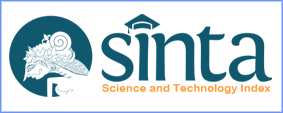Ethnomathematics: Predicting the Average Height of the Bali Mula Ancestors using Linear Regression
Abstract
Keywords
Full Text:
PDFReferences
Adam, N. A. (2010). Mutual interrogation: A methodological process in ethnomathematical research. Procedia - Social and Behavioral Sciences, 8(5), 700–707. https://doi.org/10.1016/j.sbspro.2010.12.097
Amit, M., & Qouder, F. A. (2017). Ethnomathematics and its Diverse Approaches for Mathematics Education. 23–51. https://doi.org/10.1007/978-3-319-59220-6
Ascher, M. (1995). Models and Maps from the Marshall Islands: A Case in Ethnomathematics. Historia Mathematica, 22(4), 347–370. https://doi.org/10.1006/hmat.1995.1030
Chiang, H. M., & Lin, Y. H. (2007). Mathematical ability of students with Asperger syndrome and high-functioning autism: A review of literature. Autism, 11(6), 547–556. https://doi.org/10.1177/1362361307083259
Cimen, O. A. (2014). Discussing Ethnomathematics: Is Mathematics Culturally Dependent? Procedia - Social and Behavioral Sciences, 152, 523–528. https://doi.org/10.1016/j.sbspro.2014.09.215
D’Ambrosio, U., & D’Ambrosio, B. S. (2013). The Role of Ethnomathematics in Curricular Leadership in Mathematics Education. Journal of Mathematics Education at Teachers College, 4, 19–25.
Darmayasa, J. B. (2016). Eksplorasi Ethnomathematics dalam Ajaran Asta Kosala-Kosali untuk Memperkaya Khasanah Pendidikan Matematika. Prosiding Seminar Nasional MIPA 2016, 1–7.
Dündar, S., Temel, H., & Gündüz, N. (2016). Development of a mathematical ability test: a validity and reliability study. International Journal of Mathematical Education in Science and Technology, 47(7), 1061–1075. https://doi.org/10.1080/0020739X.2016.1153734
Grover, S., & Pea, R. (2013). Educational Researcher. https://doi.org/10.3102/0013189X12463051
Ishtiaq, M. (2019). Book Review Creswell, J. W. (2014). Research Design: Qualitative, Quantitative and Mixed Methods Approaches (4th ed.). Thousand Oaks, CA: Sage. English Language Teaching, 12(5), 40. https://doi.org/10.5539/elt.v12n5p40
Jurdak, M. (2016). Learning and teaching real world problem solving in school mathematics: A multiple-perspective framework for crossing the boundary. Learning and Teaching Real World Problem Solving in School Mathematics: A Multiple-Perspective Framework for Crossing the Boundary, 1–199. https://doi.org/10.1007/978-3-319-08204-2
Kilpatrick, J. (2016). Reformulating: Approaching mathematical problem solving as inquiry. In Posing and Solving Mathematical Problems: Advances and New Perspectives. https://doi.org/10.1007/978-3-319-28023-3
Lesser, L. M. (2006). Book of Numbers: Exploring Jewish Mathematics and Culture at a Jewish High School. The Journal of Mathematics and Culture, 6(1), 8–31. https://doi.org/10.1192/bjp.111.479.1009-a
Massarwe, K., Verner, I. M., & Bshouty, D. B. (2011). The Elements of Creativity and Giftedness in Mathematics. The Elements of Creativity and Giftedness in Mathematics, (January). https://doi.org/10.1007/978-94-6091-439-3
Mosimege, M., & Ismael, A. (2004). Ethnomathematical studies on indigenous games: examples from Southern Africa. Icme-10, 14, 107–118.
Ngu, L., Hanafi, Z., Taslikhan, M., & Raman, A. (2016). Influence of emotional intelligence on students’ academic achievements. International Journal of Humanities and Social Science Research, 2(3), 41–46.
Owens, K. (2014). The impact of a teacher education culture-based project on identity as a mathematically thinking teacher. Asia-Pacific Journal of Teacher Education, 42(2), 186–207. https://doi.org/10.1080/1359866X.2014.892568
Owens, K. (2015). An Ecocultural Perspective on Visuospatial Reasoning in Geometry and Measurement Education. In Visuospatial Reasoning. Springer International Publishing.
Shirley, L. (2001). Ethnomathematics as a fundamental of instructional methodology. ZDM - International Journal on Mathematics Education, 33(3), 85–87. https://doi.org/10.1007/BF02655699
Verner, I., Massarwe, K., & Bshouty, D. (2013). Constructs of engagement emerging in an ethnomathematically-based teacher education course. Journal of Mathematical Behavior, 32(3), 494–507. https://doi.org/10.1016/j.jmathb.2013.06.002
Article Metrics
Abstract has been read : 1427 timesPDF file viewed/downloaded: 0 times
DOI: http://doi.org/10.25273/jipm.v8i1.3863
Refbacks
- There are currently no refbacks.
Copyright (c) 2019 JIPM (Jurnal Ilmiah Pendidikan Matematika)

This work is licensed under a Creative Commons Attribution-ShareAlike 4.0 International License.
View JIPM Stats
JIPM indexed by:
Copyright of JIPM (Jurnal Ilmiah Pendidikan Matematika) ISSN 2502-1745 (Online) and ISSN 2301-7929 (Print)













